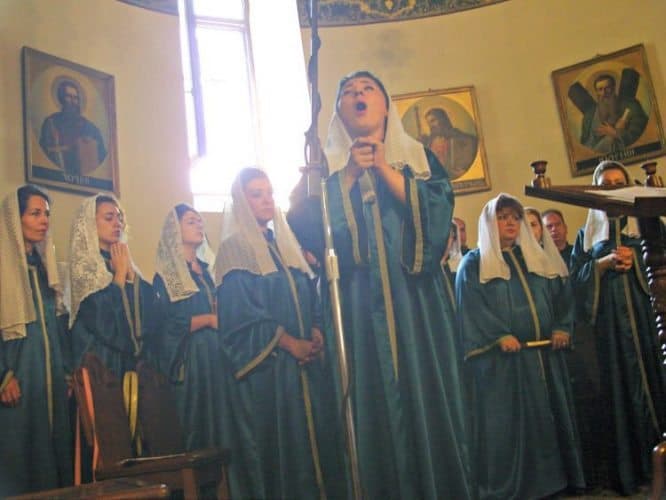
Europe’s Last Undiscovered Corner is a country on the move, and once again coming out of its Shell
By Bruce Northam
GoNOMAD Senior Writer

Although music rarely makes me cry, it does happen, including at live shows by Bonnie Raitt, Bad Company, and Sari Schorr.
 And then I stepped inside Geghard Monastery’s cryptic upper chamber in Armenia—famed for its acoustics—to behold the world-class Garni Vocal Quintet performing in dim light under a stone dome.
And then I stepped inside Geghard Monastery’s cryptic upper chamber in Armenia—famed for its acoustics—to behold the world-class Garni Vocal Quintet performing in dim light under a stone dome.
The quintet’s rendering of liturgical chants and ancient folk songs was as stirring as it was thought-provoking.
The special people in my life, in whatever forms they now inhabit, raced in and out of my mind and a feeling of gratitude overtook me.
I really kind of wished I could sing, too.
A UNESCO Site
These were my first musical tears since hearing blues-goddess Sari Schorr at Carnegie Hall, which was a tad ironic because members of Garni had also performed there.
To keep all of these feelings of goodwill balanced I then marched into the main attraction of this UNESCO monastic complex, the main alter where a Christening was unfolding.
There, I began photographing a “backstage” priest who was otherwise hidden in sight in the alter-side vestry.
Apparently, he was doing some kind of accounting (calculating the Christening bill?) and irked about my photo pursuit. Perhaps if it were an earlier century and he’d been a scholastic monk scribing a manuscript—a calendar, cookbook, religious script, or medical text on parchment or vellum—he would have been a more agreeable model. After an unholy glare, he promptly closed the creaky door.
Armenia: First Official Christian Nation
There is no other place on earth where Christianity runs deeper. Armenia became the first official Christian nation in 301AD, so it makes sense that’s its home to the one of the world’s first Christian churches, which was built in that year atop a Zoroastrian alter (note: Queen’s Freddie Mercury was a Zoroastrian). ‘
The sprawling Echmiadzin Cathedral campus could be branded the Armenian Vatican or even a Christian Disneyland, as it features dozens of spectacular worship sites on as many acres.
Just as the human mind can’t comprehend any beginning or end, which gave religion its entrée, the group singing, vibe, and atmosphere inside this Holy City church were very moving even for an agnostic. Add smoke, jewels, and men in black (some in pointy hoods), and it was showtime!

Armenia also has an intellectually humorous side. Later, I enjoyed a divine meal at an upscale countryside inn called Tsaghkung, where casual candlelit dining melded with live dinner music made by a piano and flute-like duduk.
After dinner, while perusing the property’s outdoor patio, yard space, traditional oven, and adjoining B&B’s, I asked my guide Rafi about what might have pissed off that Geghard Monastery priest who was sitting in his ancient-office-cubicle-resembling vestry.
Rafi, first dubbed my assumption a “logical fallacy.” But when I explained how the priest got up and closed the door in my face, he borrowed a moment of dialogue from his favorite Soviet-era Armenian radio program…
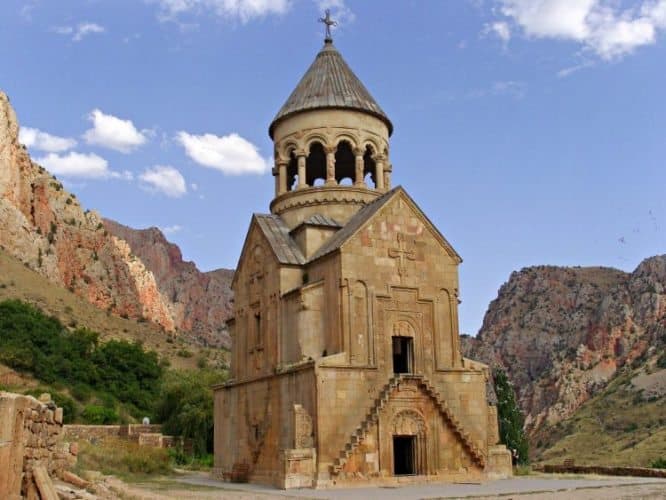
Q. What is Chaos?
A. We do not comment on national economics.
We moved on.
Armenia: The Best Tomatoes Ever
Another day in this cradle of Christianity led me into the Ararat Valley for a closer look at 17,000-foot Mount Ararat.
But even more revealing of what makes Armenia tick were the seemingly endless green valleys with vineyards and other lush crops (might be the best tomatoes I’ve ever sampled) amid the desert-mountain landscape.
After passing a “stork village” where they build stork perches all over town and rejoice when they return each year, I enjoyed some medicinal bee honey and learned from the beekeeper that Armenia is (translated) “a poor country, which means no pesticides, so the bees are fine.”
More than Religion
Armenia’s rich history is not limited to religion. Fashion and wine also run deep. In 2009, a team of Armenian and Irish archaeologists digging in southern Armenia’s Areni-1 Cave Complex found the world’s oldest brain in a burial site dating to 5000BC.
The well-preserved pre-teen skull was one of several found in clay pots. In the following years, the world’s earliest known shoe (5,500 years old, a leather moccasin) and winery (6,100 years old, possibly proving alcohol is more important than shoes) were also discovered.
Other finds include a drinking bowl, a grape press, a cup, and fermentation jars dating to about 6,100 years ago. The winding, the circuitous 7,500-square-foot site will eventually close to the public for more exhaustive research and later re-open as a major tourist attraction. The village of Areni is still known for its wine production.
Armenia quickly grows on you. Imagine the colorful stone cliffs of Utah’s Moab region—but with 13th-century charms like Noravank Monastery. Getting there requires climbing Armenia’s stairway to heaven, an ascent up the Grand Canyon-like Norovank Gorge encircled by soaring and multi-colored red-hue rocky mountainsides. Nearly every religious structure includes the option to interact with the resident priest.

Married Priests
Armenian priests, like most Orthodox priests, marry and have families, which seems to give them an enhanced sense of humor. Noravank’s chatty priest and emcee were not short on jokes or offering samples of home-brew wines in clay jugs.
It was like hanging out with that funny uncle from your childhood, the one who made you laugh and feel safe.
Despite having two not so friendly neighbors, Turkey and Azerbaijan, nearly crime-free Armenia resembles the safest countries in the world but is economically poor.
Hitchhiking is still totally doable here. A long-entrenched Peace Corp volunteer talked about frequently being “friend-napped” while simply walking along the roadside.
Ten minutes away from Norovank Gorge, we stopped at Areni Wine Art for a home-cooked meal and regional wine tastings. Here, your first nose might include a windswept whiff of manure in this everything-organic valley. They also have comfortable rooms.
Again, although the tiny country has 4,000 temples, it’s not all about going to church. You soon notice that Armenian women are lovely. Cher’s dad is from Armenia (her mom is Cherokee Indian).
Nobody acts like a Kardashian here, but the Armenian-rooted family is credited, by some Armenians, with empowering women by speaking out about weight, menstruation, attaining wealth, and other previously hushed issues.
Romeo Warning
That said, many Armenian women think Tinder is a marriage app. That same Peace Corp dude told me that the very conservative villagers, and some urbanites, believe that tampons steal a woman’s virginity. So, fellas, your Romeo routine probably won’t go over very well here unless you’re into a serious commitment.
Independent since 1991, this land of contrasts bears harsh realities side by side with luxurious fantasies. Every village has at least one abandoned Soviet-era factory. We toured an abandoned textile factory in Yegheregradzor. Now a dusty time capsule, it eerily showcased how everyone seemed to leave suddenly 30 years ago, never to return.
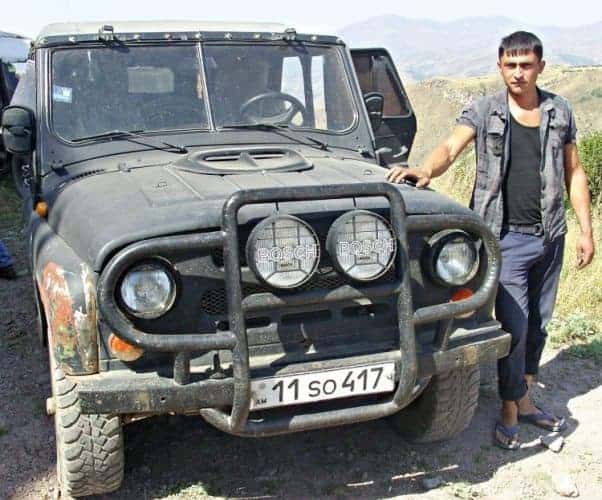
Cruising back into Vayots Dzor (one of Armenia’s Mars, they call their county-sized states Mars; there are 11 total ), the arid mountain wine country gives way to wild goats, foxes, fig trees, mulberry trees, and ever-present watermelon stands that further enhance the landscape.
Jeeping to Smbataberd
A paint-can-shaker Jeep tour to Smbataberd, a 10th century mountaintop medieval fortress, which once had 4,000 middle-age dwellers, is just another example of this tiny country’s dazzling variety.
Further south, famed Jermuk is a former Soviet-era spa getaway crown jewel that was once visited by guests arriving in helicopters and private jets.
One Roard In and Out
This one road in-and-out destination takes European-style spa healing seriously, in that the spa complexes operate much like curative hospitals. Across the street, the stylish Hyatt Place very much fits in here, and is honeymoon caliber.
But you can also still get your shoes muddy here. Just outside downtown Jermuk, a mountain-flanked gnarly dirt road crosses a stream several times and visits various hot springs.
The 4-wheel route terminates at a final cheerful earth gurgle in this beautiful, fertile valley. It’s a perfect spot for a BBQ after taking in the waters. Jermuk Falls, back in the midst of town, is featured on the label of Jermuk Water, which is now exported to the USA.
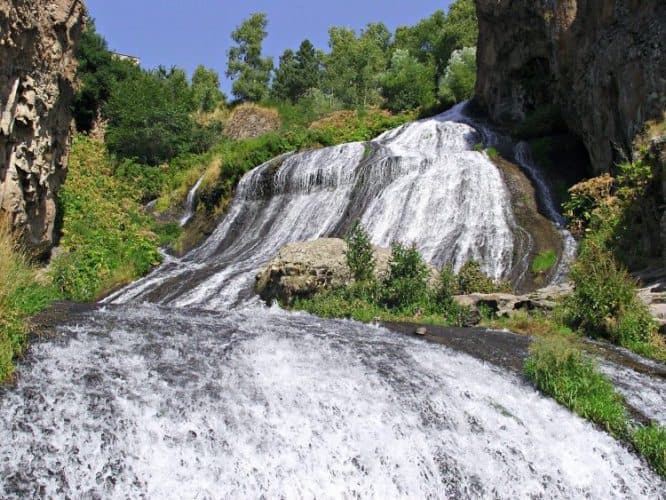
Armenians have wandered to and resettled many corners of the planet—not just Los Angeles; namely Glendale, CA.
Perpetually deported in waves from their homeland since the 11th century, Armenian communities and their traditions are prospering today in formed international colonies, which means they built and maintain churches and schools in places like Argentina, India, the Philippines, Romania, the U.S., and Ethiopia.
And not unexpectedly, Jerusalem has an Armenian Quarter, where, in 1924, heralded Ethiopian Emperor Haile Selassie beheld Armenian Churches having a strikingly similarity to his homeland’s churches.
Vorotan Canyon

Speaking of wandering, an off-road Landcruiser expedition through and above Vorotan Canyon showcases more of Armenia’s untouristed, semi-forested highland desert.

Before our arcing odyssey between two low-lying villages riding a very rugged route along the Vorotan River valley wall, we paused at Vorotnavank Monastery, built by a queen in the year 1,000 and established as a center of religious and secular scholarship.
After that scholarly pause with a view, the rugged four-wheel mountain climbing via hairpin turns and roller-coaster-like lifts began.
The savage 10-mile off-road ride linking Ltsen and Tatev had one mellow interlude, a coffee and dessert pit-stop overlooking the gorge from 10,500 feet.
This alternative Vorotan Canyon route is also available via trekking or mountain biking.

Tatev, which is on the Armenian tourist trail, does have a zero-tour-bus neighborhood where you can enjoy a homestay-style lunch that includes a donkey-in-the-yard soundtrack.
But you’ll no doubt also visit Tatev Monastery, which has 5th-century roots that set for the stage for it becoming a 9th-century university. The adjacent still-working ancient seed oil mill also intrigues.
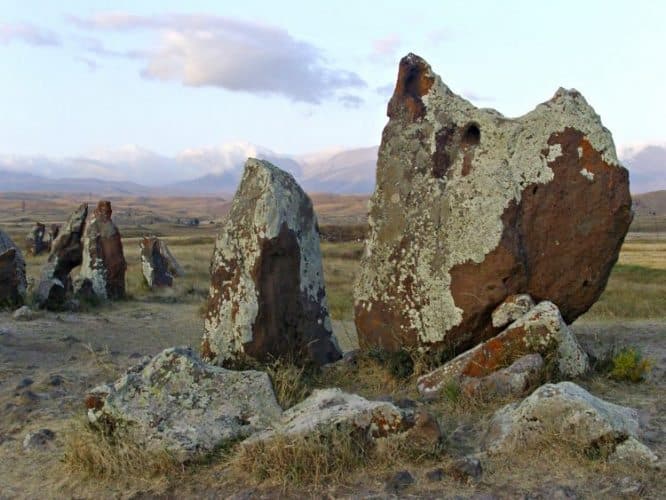
A tram called the Wings of Tatev delivers you on a 15-minute journey over a scenic valley, and you’ll be ready to call it a day.
But not until you conclude (go for sunset) at the Armenian Stonehenge’s megalithic structures at the Carahunge Ancient observatory. Some of the pillars with stone holes to observe planetary alignments were erected and chiseled in 7,500BC.
Like most of Armenia’s attractions, this ancient gem is free and not barricaded in any way.
The next day, it occurred to me that no landscape seems to be closed in Armenia.
Wildflower Paradise
Another four-wheel off-road tour ascended into an 11,200-foot grassy mountain wildflower paradise that included wild thyme next to pockets of snow lingering through the summer’s end.
It reminded me of the tundra-esque Scottish highlands if they were infused with bright volcanic remnants.
The Ughtasar route through southeast Armenia’s Karabagh is above the tree-line and summits at the Sunick region’s petroglyphs, which have 10,000 motifs.

It’s difficult to comprehend being among the communication relics of hunter-gatherer bad-asses from 7,000 years ago.
Midway through this top-of-the-world journey, my Gardman Tour odyssey stopped for a barbeque (korovatz) while wild quail darted from fields graced by wild chamomile. You’ve got to check this place out.
A Silk Road Motel
On the road back to modern civilization, we stopped over at a Silk Road motel, Orbelian’s Caravanserai, built in 1331.
It’s where road-warrior merchants and their caravan-pulling animals once rocked happy hour, and you should too. Such overnight ‘inns’ were built one day’s journey apart along the legendary, seasonal trade route.
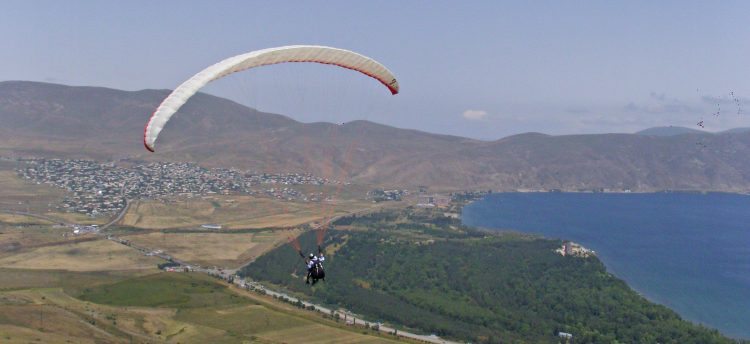
Silk Road trading undeniably influenced merchant culture here and enhanced the Armenian knack for diplomacy, by default, as Armenian craftsmanship still flourishes. These talents range from jewelry making to restaurants to regional wine production and architects. These folks can do it all.
Changing horses, so to speak, and continuing on the Silk Road, we concluded our mission by landing in Dilijan, a forested mountain resort town that’s a national park renown for hiking and cooling off from the lowland heat.
Armenia’s 300 days of sunshine each year paired with hundreds of denuded mountains above the tree line make it one of the world’s best places to paraglide, either as a beginner or a one-timer flying tandem with a pro.
It seems apropos that my last glimpse of Armenia was from high in the sky, paragliding over the mountains surrounding Lake Sevan. Like eagles, paragliders seek and follow thermal updrafts, and while in the air they both take cues from each other.
Take my cue and trust that the last undiscovered corner of Europe has zero tourist traps resembling the pricey darlings in Western Europe. Yes, an Armenian mission fits on your list—a safe and rewarding option despite the ongoing perils of terrorism in neighboring Turkey.
Visit TATON Travel’s ‘Caravan of Dreams’ along with off-roading adventure experts Gardman Tour. Discover Armenia Tours also knows the way. Ps, multilingual Rafik Santrosyan was the best guide I’ve ever had.
- Milwaukee: Small City, Big Outlook - January 30, 2024
- Laos Vows that Green Equals Gold - December 16, 2023
- Brew York: Rocking Out at the Top of the Empire State - November 11, 2023


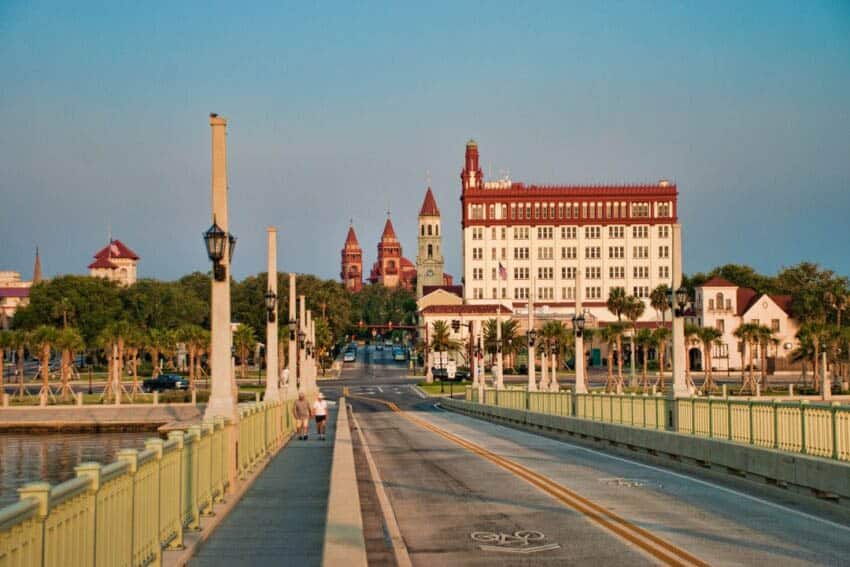

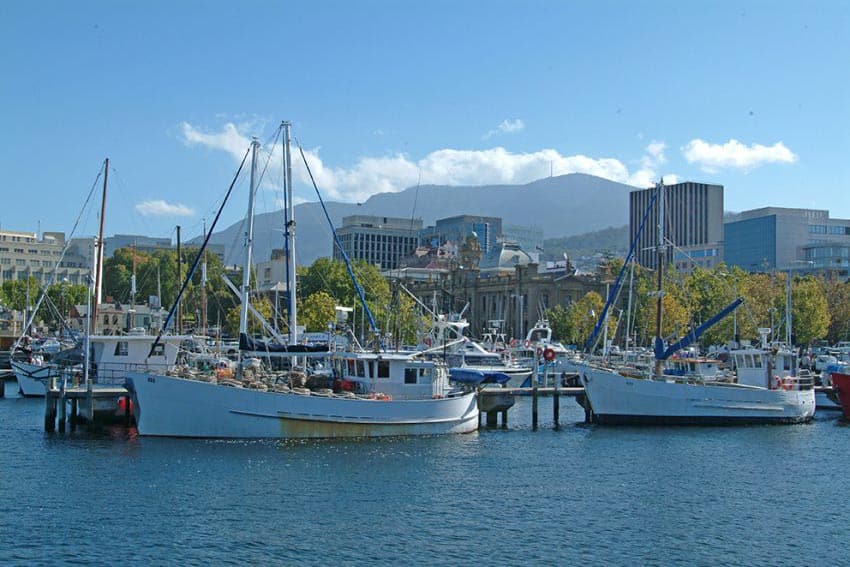
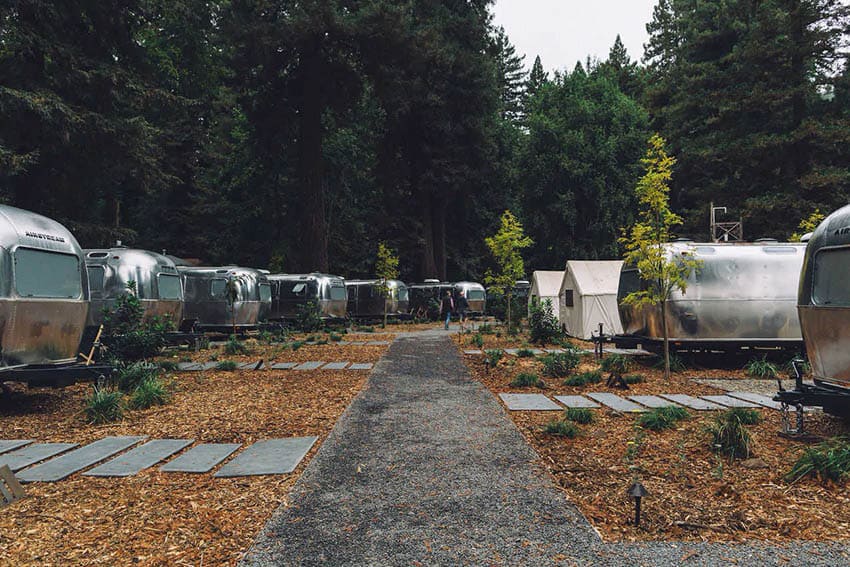
This is an excellent intro to a country I knew next to nothing about, but now want very much to visit. Fascinating! Much thanks!